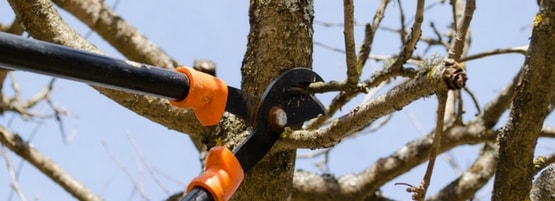January Southern Garden Checklist

Winter Landscape Care:
- Monitor plants for animal damage. Make sure fencing is secured, replenish repellents as needed and alternate scare tactics. Use a variety of tactics for the greatest success.
- Protect newly planted evergreens from winter-burn. Shade the south and southwest sides of the plants with a temporary screen of burlap, snow fence or a discarded Christmas tree.
Winter Pruning:
- The best time to prune deciduous plants is just prior to new growth when plants are dormant. It’s also easier to see the shape when their foliage is gone.
- Prune on a mild and dry day.
- Summer and fall blooming shrubs: prune now until growth begins. Late winter/early spring pruning will not interfere with summer flowering and allows the plants to recover quickly.
- Limit pruning to 30% or less in one growing season, and avoid shearing branches that can lead to poor structure and pest problems.
- Check, clean and sharpen hand pruners. Replace any damaged or old blades that can no longer be sharpened. High quality pruners have replacement blades, while less expensive pruners must be replaced when damaged.
- Clean from the inside out, removing waterspouts, suckers, dead, or crossing branches.
- Water sprouts occur along branches, usually at pruning sites. Suckers grow from the trunk or roots.
- Prune out one of a pair of crossing or rubbing branches. This eliminates rubbing that creates an open wound that can attract insects.
- When pruning dead or diseased branches, make cuts into healthy wood, well below the affected area, above a healthy bud, back to an adjoining branch or flush with the branch bark collar.
- Disinfect tools between each cut.
- Use several pruners and a bucket of disinfectant such as a one part bleach and nine parts water or 70% alcohol solution. Set spare pruners in the bucket of disinfectant while using one to make the cut.
- Switch pruners between plants or between cuts when removing cankers or diseased branches. The longer the tools remain in the solution the better disease control you’ll achieve.
- Consider hiring a certified arborist to manage pruning, especially for
larger trees.
For more pruning information: A Guide to Successful Pruning, by Virginia Tech
Spring Preparation:
- Inventory left over seeds, create a list of seeds you want to purchase, and place your order early for the greatest selection.
- Create a seeding chart for recording plant names, starting dates and other important information. Use a spreadsheet, garden journal or calendar to record and save this valuable information for next year.
- Start planting seeds of cool weather herbs, vegetables, annual flowers and perennials indoors. Check seed packet for timing and growing tips.
- Plant alyssum, larkspur and California, Iceland and Shirley poppies seeds directly in the garden as the soil can be worked.
- Plant pre-cooled tulips and daffodils in a properly prepared garden when the soil is moist but not wet.

